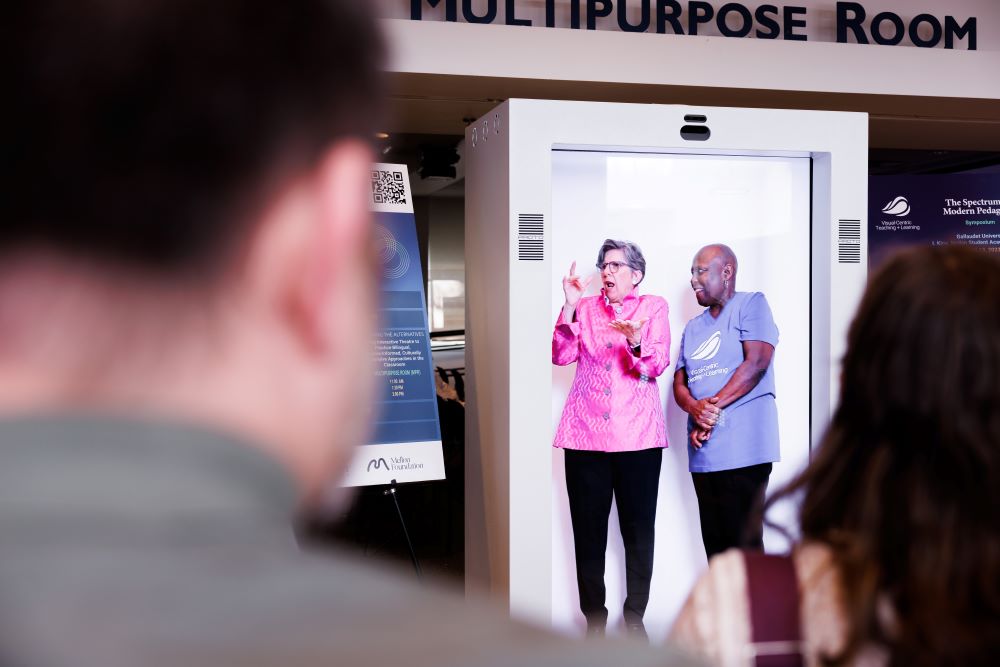In northeast DC, students are testing out the future — and it might be holographic.
Last week, pupils from Gallaudet University — the country’s oldest higher learning institution for deaf and hard-of-hearing students — participated in a three-day demo event to test how holograms might pair with America Sign Language (ASL) communication. Students initially attended a dinner without knowing the tech would be displayed until a hologram of an attendee appeared onstage. The college then hosted several workshops and demos with holograms.
“Everybody was like, ‘What is happening? Is this a movie?'” Gallaudet’s Chief Bilingual Officer Laurene Simms told Technical.ly. “And they said, ‘No, I can see you guys. I can see that this guy has a blue shirt on.'”
Instead, it was a hologram box from Proto, a California communications company. Proto developed these seven-foot-tall, four-foot-wide units to let users communicate via holograms from anywhere. Units are currently displayed in malls, museums, airports and similar public places; they are otherwise typically used for marketing and advertising purposes.
Proto’s software captures a user’s real physical scale, as well as smaller nuances like shadows and reflections. On each end is a set of encoders and decoders that communicate only with each other through cloud software. Whoever is projected as a hologram into the Proto box can see the people on the other side and hear anything they say.
“The feeling of presence, the feeling of physically being there creates almost a chemical reaction within the body that allows the people who are sharing that experience to feel like they’re connected,” founder and CEO David Nussbaum told Technical.ly. “It’s not communication, it’s a true connection.”
After a few minutes, he added, people often forget that they’re talking to a screen.
Simms said holograms are better for ASL because of the 3D nature of the language, whereas Zoom is more 2D. In the same way that vocal intonations can change a message in English, facial expressions are important in ASL. Body language is also necessary to communicate fully; certain words build on other signs, which is easier to see in 3D.
“There’s just so much information within that space [that] the spatial part of it is just a huge part of the language,” Simms said.
Simms said that Gallaudet previously tried incorporating technology with ASL and its curriculum, but ran into issues with glitchiness or pixelation that made it difficult to understand ASL. The school also experimented with a GoPro-type technology that allows 3D interaction but ultimately wasn’t as cost-effective as the hologram tech.
Still, she noted some issues with the hologram tech. The signing space was a bit too small, and she’d also like to see it switch to a landscape view so that teachers could show visuals or write on a board. It’s also a mirrored view, so she’d like to see that adjusted.
Just how Gallaudet would incorporate holograms into everyday teaching and campus life is yet to be seen, since the university was just working on a trial. But Simms sees potential for online courses or lectures.
“With the hologram, there are so many possibilities as far as being able to interact,” Simms said. “You don’t have to be physically present at that place, you can be somewhere else and still have more people at different places watching and interacting with one another and going back and forth.”







